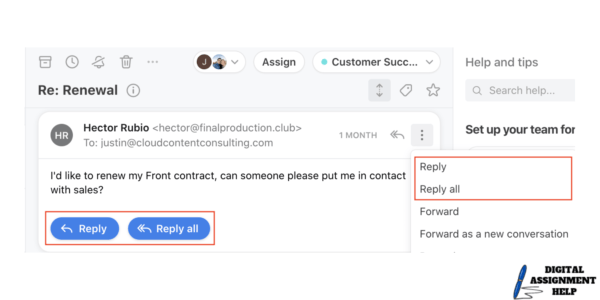Communication During a Pandemic
Communication During a Pandemic- A brief about how companies evolve their strategies of communication in the Covid-19.
Communication During a Pandemic
This article outlines the best ways for companies to communicate during a pandemic with their customers during a pandemic like the present worldwide emergency of COVID-19.
Not just in these trying times, but always, says the author, corporate communications must be responsible and conscientious.
On the topic of communication during a pandemic, we’ll look at the best ways to communicate across a variety of channels including telephone, e-mail, and social media while also avoiding any misinterpretations that might lead to a misdirected message or a message that was delivered to the incorrect recipient.

Introduction
As the COVID-19 epidemic spreads, several businesses are experimenting with new methods of getting their consumers’ attention.
Telecalling/telemarketing through email, social media, or other third-party video conferencing services may be used by organizations.
Some examples include voicemails and handwritten notes; text messages; email; teleconferencing; phone conversations; teleconferencing; voicemails; and handwritten notes.
” As an example, because most life sciences organizations are unable to meet with their clients face-to-face, emailing, picking up the phone, or sending a text message might be the next best thing.
For this reason, as well as the fact that they are recorded, these conversations must be performed by the rules, standards, and training provided by the firm.

Essential elements to consider
Communication during a pandemic in any form, whether or not it is in the context of the present epidemic,
may have legal, regulatory, and compliance issues if the right safeguards aren’t taken into account.
Here are a few pointers to keep in mind while speaking with others, whether they are customers or coworkers.
In no particular order of significance, this communication during a pandemic tip may be used in a variety of contexts.
Essential elements to consider
The importance of content, context, and tone
The receiver misunderstood and responded unexpectedly when you sent an email that was supposed to be amusing.
This is a scenario that might happen in today’s highly sensitive workplace,
when a client misinterprets a message and then passes it along to others, hurting the firm.
Assumptions
Preventing misunderstandings by taking the time to read and reread written communications
before sending them will assist. Make sure your message is clear and concise before you send it.
Avoid views and assumptions, and be careful of your tone while stating facts.
Remember that written statements might be misinterpreted in the future.
If you want your message to be understood by both the intended receiver and anybody else,
who may stumble across it, you must write it clearly and concisely.
When assessing a message & tone, keep in mind the present state of affairs.
Due to present social and economic realities, is there a risk that the message would seem
to be & out of touch

Know your audience
The audience must be taken into account while creating both external and internal messages.
Is this message being delivered to the right people? When the communication is targeted at a certain group of people,
are you utilizing the proper message and offering enough content? Whether you’re interacting with a patient,
a caregiver, a regulatory official, an investor, or another employee, are you sure your message is reaching the intended recipients?
If you’re sending an email, be sure it going to the right person.
Please double-check that you entered the correct address.
Please let me know if this was an error in your ” autofill.”
Check to see whether it is coming from the right email address if you have many. Mobile
devices with the ability to send emails from both personal and professional
accounts are very significant in this regard.

Email Chain
Responsible communication is not only about sending communications,
but also applies when responding to a communication, particularly an email. Before sending any response,
be sure you understand to whom you are replying. Is it appropriate to hit”reply all?”
Do you know everyone included in that email chain? As a best practice, be sure to read down to review the email chain to understand the entire context of the email and
to avoid forwarding content inappropriately. If you are adding recipients to an existing distribution,
be careful you are not inadvertently sharing confidential information in the body of the email or
email attachments and sending it to an unintended audience. Depending on the audience, communication during a pandemic may need
to be approved by an internal review committee or the legal, compliance, or regulatory affairs departments.

Communicating responsibly is everyone’s job
Everyone in the firm is responsible for ensuring that corporate messages are delivered responsibly.
Whoever you are, or whatever role you play, it doesn’t matter. In-house attorneys, top executives,
and CEOs all have a role to play here, and they should set an excellent example by exercising
extreme care and doing due diligence themselves. Even if the message was not meant to be hurtful,
a blunder might have far-reaching consequences. In addition to commercial and marketing communications,
companies should also take into account internal corporate communications, FDA or other government communications, investor, medical or scientific communications.
Possible negative effects of poor communication. Poor communication may have far-reaching consequences for firms in the health sciences sector.

Goodwill
It is conceivable that a company & reputation may be damaged, its operations could be disrupted,
and other potential liabilities could arise as a result of these kinds of communications during a pandemic.
When the intended message is misunderstood by the recipient or an unintended recipient, negative consequences can result.
What about passing along someone else’s content?
For firms that wish to provide content or updates from other sources, I am often asked about recommended practices.
The obvious question is, Why can’t we just email that story on COVID-19 that just came out?
It has nothing to do with our firm or any of our goods whatsoever.
Customers may find it helpful to know that we are concerned about their position and wish to provide them with relevant information.

Important Factors
Even if the article doesn’t mention the sender’s firm or its goods, it nonetheless conveys a feeling regarding COVID-19
or any other circumstance in what looks to be a low-risk method. These arguments may be accurate,
and even though we want to promote our internal team’s creativity, there are several factors
to keep in mind when sharing material acquired online. By what author(s) do you mean?
Is the source of this information well-known? Is it a product that went through a company& review?
From the standpoint of a magazine, are you entitled to disseminate it?
If you’re only passing along information from another source, you still need to be
careful about how you communicate with your customers.
Managers and team leaders should also pay attention to how their staff interacts with clients and other external parties.
Promotional Materials
Employees must be reminded regularly that, despite the greater use of written communication in the workplace,
the necessity of adhering to corporate policies, rules, and laws has not diminished.
What can companies do to help confirm promotional communications are compliant?
A product’s effectiveness or safety claims should always be taken into account as a first step.
There may be a need for a package insert and evaluation by the applicable corporate review committee if product names
or claims are used in any communication. All promotional materials must be accurate and honest.
They must be compatible with FDA labeling, include enough data, and be backed up
by considerable evidence to be considered fairly balanced.
Complying with regulations throughout the communication process might be a challenge.
A member of the sales team, for example, may send a message that is compliant after receiving the necessary training.
Virtual Training Methods
The person who receives the message, on the other hand, reacts by asking for further details
regarding the message or the goods in question.
You need to decide whether you are asking for medical information, or if you may just utilize
an authorized answer that was previously given. Additionally, many businesses have adopted virtual training methods that include role-playing exercises
as well as lessons on how to effectively communicate with clients.
Employees have the chance to raise inquiries in this style.
As a result, this kind of training is often employed and may be supported with a
readily available guidebook that staff can refer to at any time.
Social Media
Social networking is another option. Despite this article’s best practices being applied to social media,
it is a growing area of concern for businesses. People may communicate, respond, publish,
or remark on any issue on social media platforms like Facebook, Instagram, and Twitter.
If the social media profile is owned, managed, or established by a corporation or someone acting on behalf company
is typically accountable for the material that appears on the page. Most businesses have social media policies
or guidelines in place to help employees use social media responsibly. When conversing with a friend, coworker, or client,
employees should keep in mind their job responsibilities. For the most part, social media provides a highly visible and easily
available means of communicating, with the potential for unintended recipients.

Bottom Line
Promotional guidelines and regulations must be followed in all communications, regardless of how they are delivered.
Legal and regulatory standards, as well as internal approval and control systems, must be met.
The CAN-SPAM Act, Health Insurance Portability and Accountability Act, Federal Communications Commission, Federal Trade Commission, California Consumer Privacy Act,
and the Telephone Consumer Protection Act are just a few of the federal and state laws,
regulations, and agencies that companies planning to telemarket need to be aware of.
Personal privacy is very important, and businesses and workers should be aware of whether their communications are subject to national
or international restrictions, which are often determined by the recipient’s geographic location.
Whether or not a connection has been developed with the client or contact should also be considered before communication
is sent. Think of it like this: Has there been previously documented contact with this person?
Communication Regulatory
Would this person reasonably expect to hear from you?
Has this contact opted into company communications or provided consent to receive promotional information?
How was the contact information for this person obtained?
Regulatory, compliance, and/or legal departments should be notified and reminded by managers to ensure that,
all communications during a pandemic are lawful, suitable, and compliant.
Conclusion
To successfully communicate during a pandemic, it is important to encourage workers to ask questions,
keep open lines of contact with employees, and apply the best communication during a pandemic practice,
not just during a pandemic, but in normal times.
Author- Porzio, Bromberg, and Newman PC


